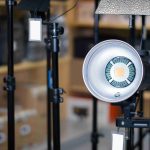With electric mobility transforming the concept of personal and commercial transportation, material science is an essential support system. Some of the outstanding innovations include the use of protective films that are aimed at maintaining surface integrity and aesthetic value. For vehicles like the electric golf car, often used in open, sun-exposed environments, protection from scratches, debris, and UV radiation is essential.
Thermoplastic polyurethane paint protection film—known as TPU PPF—offers a durable, flexible, and invisible shield that ensures longevity and visual quality.
This article explores how this advanced material technology meets the evolving needs of electric golf cars, contributing to better performance, lower maintenance, and a polished appearance that lasts.
What Is TPU PPF and Why It’s Used in Vehicle Protection?
TPU PPF, or thermoplastic polyurethane paint protection film, is a clear, self-healing layer applied to a vehicle’s exterior to guard against scratches, rock chips, environmental contaminants, and fading. Developed through advances in polymer engineering, TPU PPF combines elasticity, transparency, and impact resistance in a single thin membrane. This film is not like a conventional coating or a wax but instead it actively absorbs the minor abrasions and may be transformed to the initial smooth surface under heating.
Originally used in luxury automobiles and sports vehicles, TPU PPF has become increasingly popular for other types of transport—particularly those exposed to outdoor elements and rough handling. It is flexible and optically clear, thus suitable in curved surfaces of the body. For electric golf cars, which are frequently driven across varied terrains and parked under direct sunlight, TPU PPF provides essential defense without altering the vehicle’s design or finish.
The Rise of Electric Golf Cars in Personal and Commercial Transport:
The electric golf car has evolved far beyond its original role on golf courses. It is now accepted in city transportation, campus transport, hotel transport, airport transport and gated communities. These vehicles are environmentally friendly since they have a silent working engine, zero emission, and less maintenance cost, which matches the attainment of sustainable transport.

As electric golf cars expand into broader markets, design expectations have also risen. Consumers are interested in models, which are not only efficient but also attractive to the eye. This change adds a higher significance to having a clean and spot-free exterior. Both manufacturers and users are spending on protective technologies, in order to make sure that such vehicles maintain their functionality and final touch over the years of service, especially in the climates, where sun and rain may make the wear happen faster.
Why Paint Protection Matters for Electric Golf Cars?
Unlike conventional passenger vehicles that often receive garage storage and regular detailing, electric golf cars are frequently left outdoors and subjected to harsh environmental exposure. At a resort, an industrial location, or a residential environment, their surfaces can be damaged by:
- Scratches from bushes, trees, or tight pathways
- Impact from stones or debris
- UV radiation leading to fading and discoloration
- Acidic rain or chemical spills from nearby maintenance work
Paint correction is both expensive and time consuming once it has been damaged. It is also able to reduce the resale or brand value of a commercial fleet. Applying TPU PPF offers a proactive solution, reducing long-term maintenance costs and preserving the sleek appearance that reflects the modernity of electric transport.
How TPU PPF Extends the Lifespan of Golf Car Exteriors?
The protective capabilities of TPU PPF go far beyond surface-level benefits. The film is able to absorb the damage of any superficial abrasion and any chemical reaction without affecting the original paint beneath. It has a hydrophobic surface that prevents water, dust and dirt thus simple to clean and less washing is required.
Additionally, many TPU PPF products are designed with self-healing properties. The film has the ability to self heal tiny scratches when exposed to moderate heat like sunlight or warm water. This functionality is especially valuable for electric golf cars that undergo frequent use in commercial operations. During time, this material helps to reduce the costs of repair, downtime, and more of a professional appearance over time, which are of added value to the personal owners or to the business.
Application Techniques: Installing TPU PPF on Curved Surfaces
Installing TPU PPF on an electric golf car requires precision and care, especially given the curves and compact dimensions of these vehicles. Contrary to flat panels of standard cars, the exterior of golf cars usually encompasses molded bumpers, curved hoods and integrated lighting, which require flexible application.
The common steps that are followed by professional installers include:
- Surface Preparation: Thorough cleaning and decontamination to remove wax, dust, or oils
- Custom Cutting: Using pre-cut templates or plotters to match panel dimensions
- Wet Application: Applying the film with a slip solution that allows for repositioning
- Squeegee Work: Removing bubbles and ensuring a tight bond to the surface
- Heat Activation: Using gentle heat to wrap the film smoothly around curves and corners
This method ensures complete coverage while avoiding creases or visible edges. Once installed, the film becomes virtually invisible and remains effective for several years.
Durability, Weather Resistance, and UV Protection Benefits:
The advantages of TPU PPF is its resilience in adverse conditions. The film is engineered to tolerate:
- High UV exposure without yellowing
- Extreme temperatures and humidity
- Chemical spills, bird droppings, and tree sap
- Physical impacts from stones, brushes, or carts
For electric golf cars, which often operate in environments where weather and rough terrain are constant factors, this level of protection is invaluable. The movie does not destroy color integrity and premature aging of exterior surfaces. Its elastic nature also enables it to bend when there is slight movement of the body and this aspect ensures that it does not crack or peel off in the long run.
As material science continues to evolve, newer formulations of TPU PPF are expected to offer even greater transparency, environmental resistance, and ease of installation.
Conclusion:
The future of sustainable transport is being developed by the combination of electric mobility and smart material protection. TPU PPF offers electric golf car owners a reliable way to preserve aesthetics, reduce maintenance, and ensure long-term durability. With these vehicles taking centre stage in the personal and governmental worlds, the need to invest in protective mechanisms is not only expedient-but also necessary.


